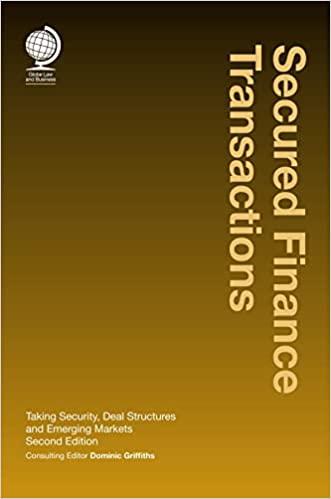Question
A common stock pays an annual dividend per share of $2.10. The risk-free rate is 7 percent and the risk premium for this stock is
A common stock pays an annual dividend per share of $2.10. The risk-free rate is 7 percent and the risk premium for this stock is 4 percent. If the annual dividend is expected to remain at $2.10, the value of the stock is closest to: a. $19.09 b. $30.00 c. $52.50 d. $70.00
A stock has a required return of 15 percent, a constant growth rate of 10 percent, and a dividend payout ratio of 50 percent. What should the stocks PIE ratio be? a. 3.0 b. 4.5 c. 9.0 d. 11.0
A stock will not pay dividends until three years from now. The dividend then will be $2.00 per share, the dividend payout ratio will be 40 percent, and return on equity will be 15 percent. If the required rate of return is 12 percent, which of the following is closest to the value of the stock? a. $27 b. $33 c. $53 d. $67
Assume that at the end of the next year, Company A will pay a $2.00 dividend per share, an increase from the current dividend of $1.50 per share. After that, the dividend is expected to increase at a constant rate of 5 percent. If you require a 12 percent return on the stock, what is the value of the stock? a. $28.57 b. $28.79 c. $30.00 d. $31.78
A share of stock will pay a dividend of $1.00 one year from now, with dividend growth of 5 percent thereafter. In the context of a dividend discount model, the stock is correctly priced at $10 today. According to the constant dividend growth model, if the required return is 15 percent, what should the value of the stock be two years from now? a. $11.03 b. $12.10 c. $13.23 d. $14.40
Step by Step Solution
There are 3 Steps involved in it
Step: 1

Get Instant Access to Expert-Tailored Solutions
See step-by-step solutions with expert insights and AI powered tools for academic success
Step: 2

Step: 3

Ace Your Homework with AI
Get the answers you need in no time with our AI-driven, step-by-step assistance
Get Started


